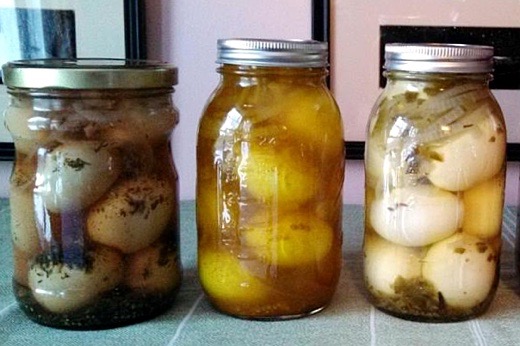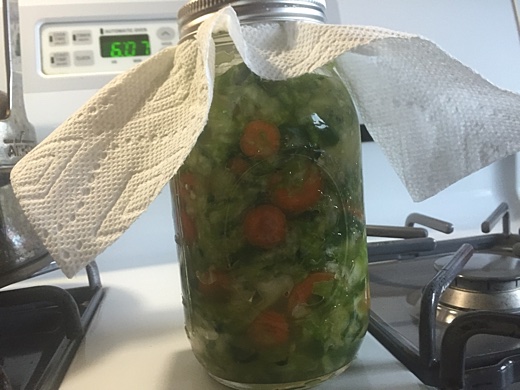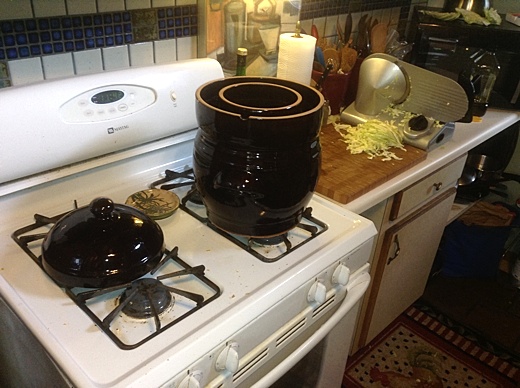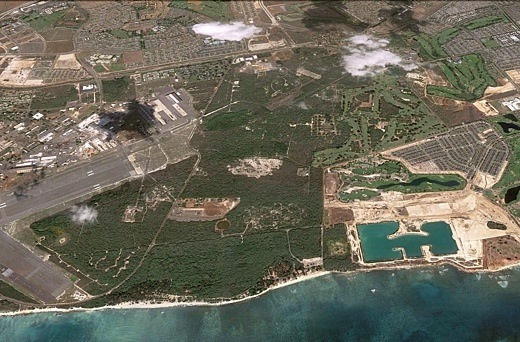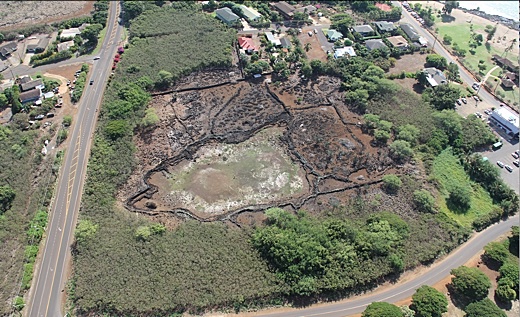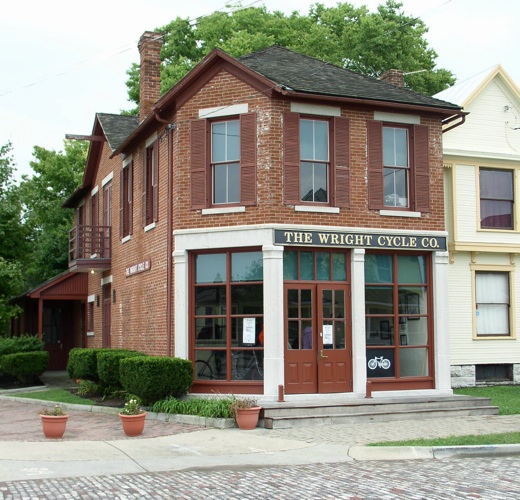SUBHEAD: If some achievements of our age are to be carried forward then the time of the seedbearers has arrived.
By John Michael Greer on 30 April 2014 for the Archdruid Report -
(
http://thearchdruidreport.blogspot.com/2014/04/the-time-of-seedbearers.html)
 Image above: "The Sower" by Vincent Van Gogh, 1888. From (http://www.escuelagabrielarcan.com.ar/?attachment_id=670).
Image above: "The Sower" by Vincent Van Gogh, 1888. From (http://www.escuelagabrielarcan.com.ar/?attachment_id=670).
Myths, according to the philosopher Sallust, are things that never happened but always are. With a few modifications, the same rule applies to the enduring narratives of every culture, the stories that find a new audience in every generation as long as their parent cultures last.
Stories of that stature don’t need to chronicle events that actually took place to have something profoundly relevant to say, and the heroic quest I used last week to frame a satire on the embarrassingly unheroic behavior of many of industrial civilization’s more privileged inmates is no exception to that rule.
That’s true of hero tales generally, of course. The thegns and ceorls who sat spellbound in an Anglo-Saxon meadhall while a scop chanted the deeds of Beowulf to the sound of a six-stringed lyre didn’t have to face the prospect of wrestling with cannibalistic ogres or battling fire-breathing dragons, and were doubtless well aware of that fact.
If they believed that terrible creatures of a kind no longer found once existed in the legendary past, why, so do we—the difference in our case is merely that we call our monsters “dinosaurs,” and insist that our paleontologist-storytellers be prepared to show us the bones.
The audience in the meadhall never wondered whether Beowulf was a historical figure in the same sense as their own great-grandparents. Since history and legend hadn’t yet separated out in the thinking of the time, Beowulf and those great-grandparents occupied exactly the same status, that of people in the past about whom stories were told.
Further than that it was unnecessary to go, since what mattered to them about Beowulf was not whether he lived but how he lived. The tale’s original audience, it’s worth recalling, got up the next morning to face the challenges of life in dark age Britain, in which defending their community against savage violence was a commonplace event; having the example of Beowulf’s courage and loyalty in mind must have made that harsh reality a little easier to face.
The same point can be made about the hero tale I borrowed and rewrote in last week’s post, Tolkien’s The Lord of the Rings. Frodo Baggins was no Beowulf, which was of course exactly the point, since Tolkien was writing for a different audience in a different age.
The experience of being wrenched out of a peaceful community and sent on a long march toward horror and death was one that Tolkien faced as a young man in the First World War, and watched his sons face in the Second. That’s what gave Tolkien’s tale its appeal: his hobbits were ordinary people facing extraordinary challenges, like so many people in the bitter years of the early twentieth century.
The contrast between Beowulf and The Lord of the Rings is precisely that between the beginning and the zenith of a civilization. Beowulf, like his audience, was born into an age of chaos and violence, and there was never any question of what he was supposed to do about it; the only detail that had to be settled was how many of the horrors of his time he would overcome before one of them finally killed him.
Frodo Baggins, like his audience, was born into a world that was mostly at peace, but found itself faced with a resurgence of a nightmare that everyone in his community thought had been laid to rest for good.
In Frodo’s case, the question of what he was going to do about the crisis of his age was what mattered most—and of course that’s why I was able to stand Tolkien’s narrative on its head last week, by tracing out what would have happened if Frodo’s answer had been different.
Give it a few more centuries, and it’s a safe bet that the stories that matter will be back on Beowulf’s side of the equation, as the process of decline and fall now under way leads into an era of dissolution and rebirth that we might as well call by the time-honored label “dark age.” For the time being, though, most of us are still on Frodo’s side of things, trying to come to terms with the appalling realization that the world we know is coming apart and it’s up to us to do something about it.
That said, there’s a crucial difference between the situation faced by Frodo Baggins and his friends in Middle-earth, and the situation faced by those of us who have awakened to the crisis of our time here and now. Tolkien was a profoundly conservative thinker and writer, in the full sense of that word. The plot engine of his works of adult fiction,
The Silmarillion just as much as The Lord of the Rings, was always the struggle to hold onto the last scraps of a glorious past, and his powers of evil want to make Middle-earth modern, efficient and up-to-date by annihilating the past and replacing it with a cutting-edge industrial landscape of slagheaps and smokestacks.
It’s thus no accident that Saruman’s speech to Gandalf in book two, chapter two of The Fellowship of the Ring is a parody of the modern rhetoric of progress, or that The Return of the King ends with a Luddite revolt against Sharkey’s attempted industrialization of the Shire; Tolkien was a keen and acerbic observer of twentieth-century England, and wove much of his own political thought into his stories.
The victory won by Tolkien’s protagonists in The Lord of the Rings, accordingly, amounted to restoring Middle-Earth as far as possible to the condition it was in before the War of the Ring, with the clock turned back a bit further here and there—for example, the reestablishment of the monarchy in Gondor—and a keen sense of loss surrounding those changes that couldn’t be undone.
That was a reasonable goal in Tolkien’s imagined setting, and it’s understandable that so many people want to achieve the same thing here and now: to preserve some semblance of industrial civilization in the teeth of the rising spiral of crises that are already beginning to tear it apart.
I can sympathize with their desire. It’s become fashionable in many circles to ignore the achievements of the industrial age and focus purely on its failures, or to fixate on the places where it fell short of the frankly Utopian hopes that clustered around its rise.
If the Enlightenment turned out to be far more of a mixed blessing than its more enthusiastic prophets liked to imagine, and if so many achievements of science and technology turned into sources of immense misery once they were whored out in the service of greed and political power, the same can be said of most human things.
“If it has passed from the high and the beautiful to darkness and ruin,” Tolkien commented of a not dissimilar trajectory, “that was of old the fate of Arda marred.”
Still, the window of opportunity through which modern industrial civilization might have been able to escape its unwelcome destiny has long since slammed shut.
That’s one of the things I meant to suggest in last week’s post by sketching out a Middle-earth already ravaged by the Dark Lord, in which most of the heroes of Tolkien’s trilogy were dead and most of the things they fought to save had already been lost. Even with those changes, though, Tolkien’s narrative no longer fits the crisis of our age as well as it did a few decades back.
Our Ring of Power was the fantastic glut of energy we got from fossil fuels; we could have renounced it, as Tolkien’s characters renounced the One Ring, before we’d burnt enough to destabilize the climate and locked ourselves into a set of economic arrangements with no future...but that’s not what happened, of course.
We didn’t make that collective choice when it still could have made a difference: when peak oil was still decades in the future, anthropogenic climate change hadn’t yet begun to destabilize the planet’s ice sheets and weather patterns, and the variables that define the crisis of our age—depletion rates, CO2 concentrations, global population, and the rest of them—were a good deal less overwhelming than they’ve now become.
As The Limits to Growth pointed out more than four decades ago, any effort to extract industrial civilization from the trap it made for itself had to get under way long before the jaws of that trap began to bite, because the rising economic burden inflicted by the ongoing depletion of nonrenewable resources and the impacts of pollution and ecosystem degradation were eating away at the surplus wealth needed to meet the costs of the transition to sustainability.
That prediction has now become our reality. Grandiose visions of vast renewable-energy buildouts and geoengineering projects on a global scale, of the kind being hawked so ebulliently these days by the prophets of eternal business as usual, fit awkwardly with the reality that a great many industrial nations can no longer afford to maintain basic infrastructures or to keep large and growing fractions of their populations from sliding into desperate poverty.
The choice that I discussed in last week’s post, reduced to its hard economic bones, was whether we were going to put what remained of our stock of fossil fuels and other nonrenewable resources into maintaining our current standard of living for a while longer, or whether we were going to put it into building a livable world for our grandchildren.
The great majority of us chose the first option, and insisting at the top of our lungs that of course we could have both did nothing to keep the second from slipping away into the realm of might-have-beens. The political will to make the changes and accept the sacrifices that would be required to do anything else went missing in action in the 1980s and hasn’t been seen since.
That’s the trap that was hidden in the crisis of our age: while the costs of transition were still small enough that we could have met them without major sacrifice, the consequences of inaction were still far enough in the future that most people could pretend they weren’t there; by the time the consequences were hard to ignore, the costs of transition had become too great for most people to accept—and not too long after that, they had become too great to be met at all. .
As a commentary on our current situation, in other words, the story of the heroic quest has passed its pull date. As I noted years ago, insisting that the world must always follow a single narrative is a fertile source of misunderstanding and misery.
Consider the popular insistence that the world can grow its way out of problems caused by growth—as though you could treat the consequences of chronic alcoholism by drinking even more heavily!
What gives that frankly idiotic claim the appeal it has is that it draws on one of the standard stories of our age, the Horatio Alger story of the person who overcame long odds to make a success of himself. That does happen sometimes, which is why it’s a popular story; the lie creeps in when the claim gets made that this is always what happens.
When people insist, as so many of them do, that of course we’ll overcome the limits to growth and every other obstacle to our allegedly preordained destiny out there among the stars, all that means is that they have a single story wedged into their imagination so tightly that mere reality can’t shake it loose.
The same thing’s true of all the other credos I’ve discussed in recent posts, from “they’ll think of something” through “it’s all somebody else’s fault” right on up to “we’re all going to be extinct soon anyway so it doesn’t matter any more.”
Choose any thoughtstopper you like from your randomly generated Peak Oil Denial Bingo card, and behind it lies a single story, repeating itself monotonously over and over in the heads of those who can’t imagine the world unfolding in any other way.
The insistence that it’s not too late, that there must still be time to keep industrial civilization from crashing into ruin if only we all come together to make one great effort, and that there’s any reason to think that we can and will all come together, is another example.
The narrative behind that claim has a profound appeal to people nowadays, which is why stories that feature it—again, Tolkien’s trilogy comes to mind—are as popular as they are.
It’s deeply consoling to be told that there’s still one last chance to escape the harsh future that’s already taking shape around us. It seems almost cruel to point out that whether a belief appeals to our emotions has no bearing on whether or not it’s true.
The suggestion that I’ve been making since this blog first began eight years ago is that we’re long past the point at which modern industrial civilization might still have been rescued from the consequences of its own mistakes.
If that’s the case, it’s no longer useful to put the very limited resources we have left into trying to stop the inevitable, and it’s even less useful to wallow in wishful thinking about how splendid it would be if the few of us who recognize the predicament we’re in were to be joined by enough other people to make a difference.
If anything of value is to get through the harsh decades and centuries ahead of us, if anything worth saving is to be rescued from the wreck of our civilization, there’s plenty of work to do, and daydreaming about mass movements that aren’t happening and grand projects we can no longer afford simply wastes what little time we still have left.
That’s why I’ve tried to suggest in previous posts here that it’s time to set aside some of our more familiar stories and try reframing the crisis of our age in less shopworn ways.
There are plenty of viable options—plenty, that is, of narratives that talk about what happens when the last hope of rescue has gone whistling down the wind and it’s time to figure out what can be saved in the midst of disaster—but the one that keeps coming back to my mind is one I learned and, ironically, dismissed as uninteresting quite a few decades ago, in the early years of my esoteric studies: the old legend of the fall of Atlantis.
It’s probably necessary to note here that whether Atlantis existed as a historical reality is not the point.
While it’s interesting to speculate about whether human societies more advanced than current theory suggests might have flourished in the late Ice Age and then drowned beneath rising seas, those speculations are as irrelevant here as trying to fit Grendel and his mother into the family tree of the Hominidae, say, or discussing how plate tectonics could have produced the improbable mountain ranges of Middle-earth. Whatever else it might or might not have been, Atlantis is a story, one that has a potent presence in our collective imagination.
Like Beowulf or The Lord of the Rings, the Atlantis story is about the confrontation with evil, but where Beowulf comes at the beginning of a civilization and Frodo Baggins marks its zenith, the Atlantis story illuminates its end.
Mind you, the version of the story of Atlantis I learned, in common with most of the versions in circulation in occult schools in those days, had three details that you won’t find in Plato’s account, or in most of the rehashes that have been churned out by the rejected-knowledge industry over the last century or so.
First, according to that version, Atlantis didn’t sink all at once; rather, there were three inundations separated by long intervals. Second, the sinking of Atlantis wasn’t a natural disaster; it was the direct result of the clueless actions of the Atlanteans, who brought destruction on themselves by their misuse of advanced technology.
The third detail, though, is the one that matters here. According to the mimeographed lessons I studied back in the day, as it became clear that Atlantean technology had the potential to bring about terrifying blowback, the Atlanteans divided into two factions: the Children of the Law of One, who took the warnings seriously and tried to get the rest of Atlantean society to do so, and the Servants of the Dark Face, who dismissed the whole issue.
I don’t know for a fact that these latter went around saying “I’m sure the priests of the Sun Temple will think of something,” “orichalcum will always be with us,” “the ice age wasn’t ended by an ice shortage,” and the like, but it seems likely. Those of my readers who haven’t spent the last forty years hiding at the bottom of the sea will know instantly which of these factions spoke for the majority and which was marginalized and derided as a bunch of doomers.
According to the story, when the First Inundation hit and a big chunk of Atlantis ended up permanently beneath the sea, the shock managed to convince a lot of Atlanteans that the Children of the Law of One had a point, and for a while there was an organized effort to stop doing the things that were causing the blowback.
As the immediate memories of the Inundation faded, though, people convinced themselves that the flooding had just been one of those things, and went back to their old habits. When the Second Inundation followed and all of Atlantis sank but the two big islands of Ruta and Daitya, though, the same pattern didn’t repeat itself; the Children of the Law of One were marginalized even further, and the Servants of the Dark Face became even more of a majority, because nobody wanted to admit the role their own actions had had in causing the catastrophe. Again, those of my readers who have been paying attention for the last forty years know this story inside and out.
It’s what happened next, though, that matters most. In the years between the Second Inundation and the Third and last one, so the story goes, Atlantis was for all practical purposes a madhouse with the inmates in charge.
Everybody knew what was going to happen and nobody wanted to deal with the implications of that knowledge, and the strain expressed itself in orgiastic excess, bizarre belief systems, and a rising spiral of political conflict ending in civil war—anything you care to name, as long as it didn’t address the fact that Atlantis was destroying itself and that nearly all the Atlanteans were enthusiastic participants in the activities driving the destruction.
That was when the Children of the Law of One looked at one another and, so to speak, cashed out their accounts at the First National Bank of Atlantis, invested the proceeds in shipping, and sailed off to distant lands to become the seedbearers of the new age of the world.
That’s the story that speaks to me just now—enough so that I’ve more than once considered writing a fantasy novel about the fall of Atlantis as a way of talking about the crisis of our age. Of course that story doesn’t speak to everyone, and the belief systems that insist either that everything is fine or that nothing can be done anyway have no shortage of enthusiasts. If these belief systems turn out to be as delusional as they look, though, what then?
The future that very few people are willing to consider or prepare for is the one that history shows us is the common destiny of every other failed civilization: the long, bitter, ragged road of decline and fall into a dark age, from which future civilizations will eventually be born.
If that’s the future ahead of us, as I believe it is, the necessary preparations need to be made now, if the best achievements of our age are to be carried into the future when the time of the seedbearers arrives.
.
